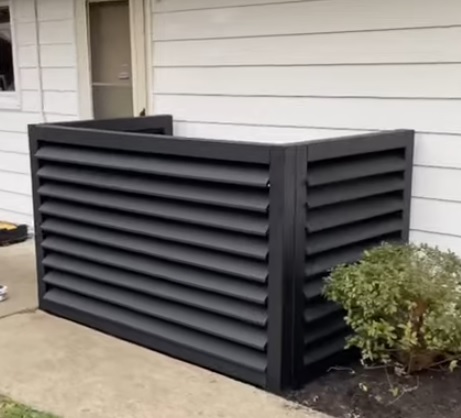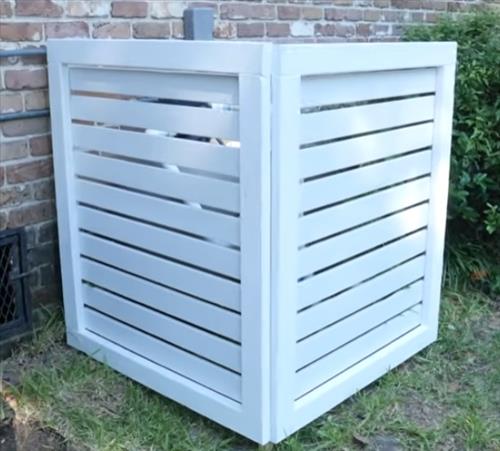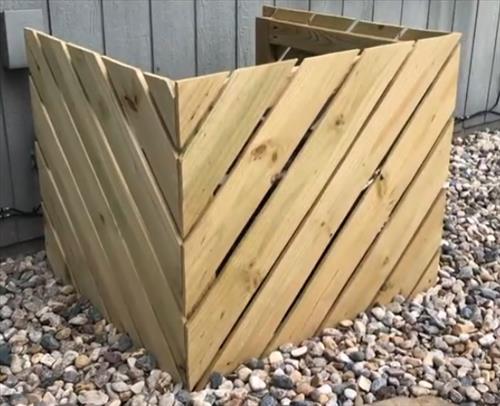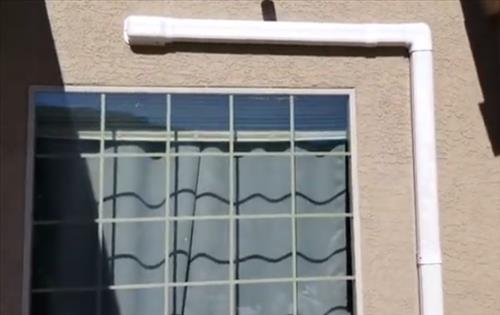
Mini split units have many benefits, from DIY installation kits to low cost to operate which means lower utility bills.
While they are great to use, there can be times when the outside unit can stick out and be an eyesore.
This will depend on the house and landscaping as to how well a unit fits into a yard.
For example, if a unit is in a backyard it may not matter, but in the front yard it may be a better look to camouflage and conceal it.
There are many ways that a mini split can be camouflaged and concealed to look better or barely noticeable.
Can You Enclose a Mini Split Condenser?
A mini split outside condenser can not be completely enclosed as the fan needs to blow air away from the unit.
A cover fence can be built around the unit that allows air to pass and blow away.
The outside condenser has a large fan that blows air away from the unit.
If the fan can not blow air away from the unit, the mini split will not work.
Most mini splits will need 2-3 feet of space both front and back to operate correctly.
Check your unit’s manual for what the rated space needed is.
Can You Cover a Mini Split Condenser?
Yes, a top cover like a table can be built over the unit, but the side will need an open space to blow air away.
A table type of cover is commonly built over units in very cold climates that get lots of snow.
As long as the sides are not covers and the fan can blow air away from the condenser, a cover can be used.
How to Camouflage and Conceal a Mini Split Unit
- Cover Fence
- Plant Shrubs or Small Trees
- Mini Split Line Set Cover

A cover fence with open slots that allow air to blow away from the condenser is commonly built around outside condenser units.
They can be built in different styles as long as they allow the condensing fan to blow out air; otherwise, the unit will not work.

Small shrubs or trees can be planted roughly 3 feet away from a mini split condenser.
As long as the airflow away from the unit is not blocked, plants can be used to hide a mini split.
When picking plants, keep in mind that the condensing fan needs to be clean of any leaves or debris.
If leaves or debris get inside the unit, they can block the condensing fan from working.

More than likely, your mini split already has a line set cover that goes up the wall.
If not, they are low-cost items that can clean up the look of the refrigerant lines and wiring.
Some HVAC companies build line set covers out of sheet metal that, while they work very well, often look less than ideal.
Often they can be painted, or it can be replaced with a line set cover kit with several types available.
Summary
The outside condenser of a mini split can be hidden with different types of camouflage.
The first thing to do is find the best line set cover kit for your home or paint it, so it matches the landscape.
The unit itself can have a cover fence built around it that hides and conceal the unit.
Many standard air conditioning units have had this done over the years, which can be looked at for ideas.
The main thing to watch for is the condensing fan airflow from the front and the back. If the airflow is blocked, the unit will not work correctly.
Most mini split outside condensers needs roughly 2-3 feet of space on both sides of the unit to work properly.